Advanced Energy Design Guides
To promote building energy efficiency, ASHRAE and its partners are making the Advanced Energy Design Guides available for free download (PDF). The zero energy Guides offer designers and contractors the tools needed for achieving zero energy buildings. The 50% Guides offer designers and contractors the tools needed for achieving a 50% energy savings compared to buildings that meet the minimum requirements of Standard 90.1-2004, and the 30% Guides offer a 30% energy savings compared to buildings that meet the minimum energy requirements of Standard 90.1-1999.
ASHRAE, in collaboration with AIA (American Institute of Architects), IES (Illuminating Engineering Society), USGBC (U.S. Green Building Council) and the DOE (Department of Energy) continues to develop the Advanced Energy Design Guide (AEDG) Series.
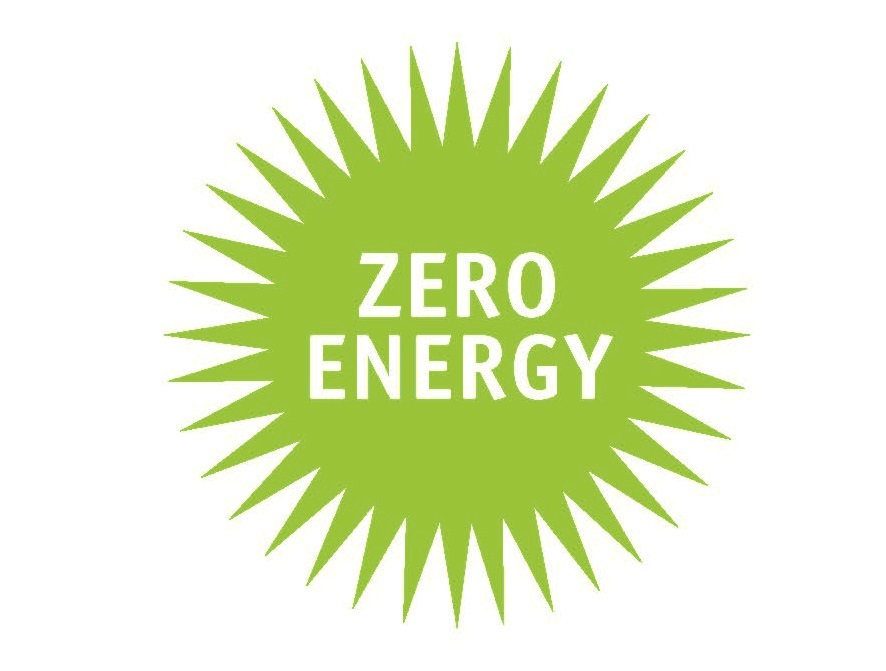
Zero Energy Guides
Three Zero Energy guides are available for download or purchase.
Learn More
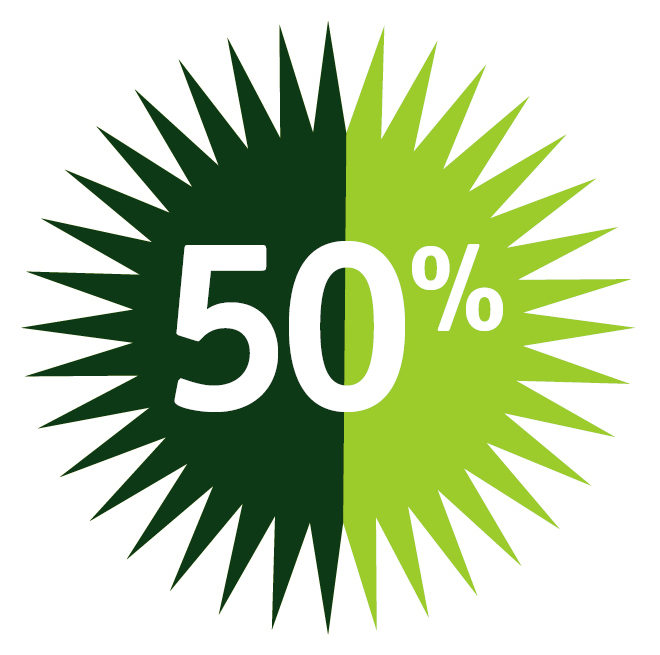
50% Energy Guide
Five 50% Guides are available for download or purchase. Learn More
LEARN MORE
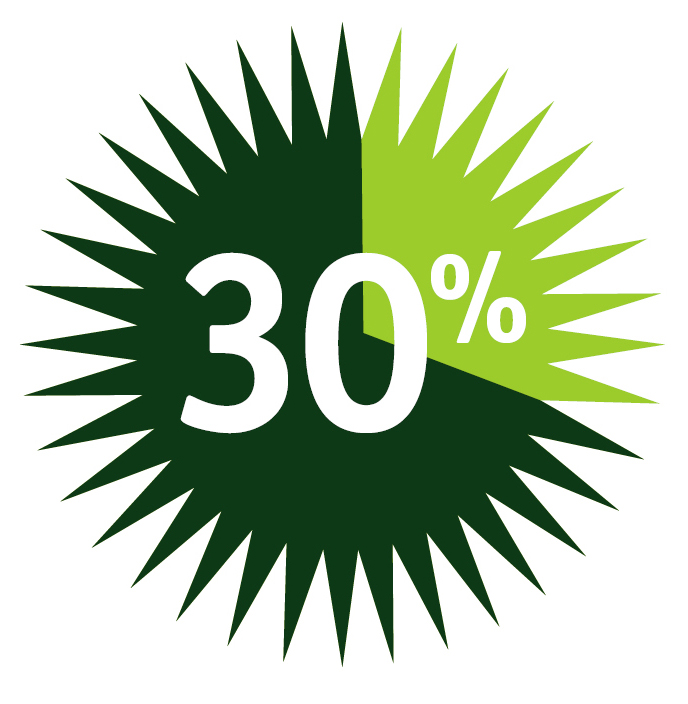
30% Energy Guide
Six 30% Guides are available for download or purchase.
Learn More
Visit the Publications Updates page for updates and errata on these and other publications.
LEED Compliance Path
The Advanced Energy Design Guides provide a prescriptive compliance path for LEED New Construction EA points. The specific points available for use of the AEDGs is described in the LEED documentation and may vary by Guide type. More details are available at the U.S. Green Building Council’s LEED website. For information on LEED Rating System
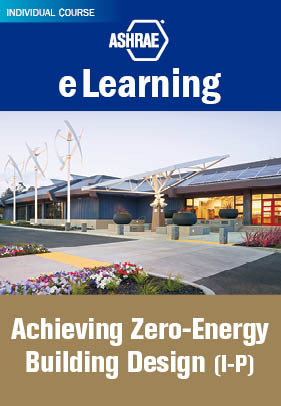
eLearning Courses
Inexpensive, convenient courses focused on AEDGs.
-
View Courses
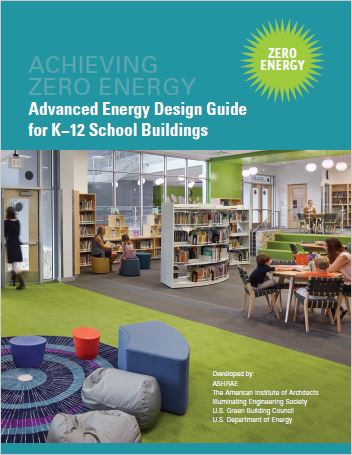
ZE K-12 Schools Seminar
View ‘The Process for Zero Energy K-12 Schools: The Next Series of ASHRAE Advanced Energy Design Guides’ seminar, presented at the 2018 ASHRAE Winter Conference.
© 2020 ASHRAE. This seminar may not be copied and/or distributed electronically or in paper form without permission of ASHRAE.
VIEW SEMINAR
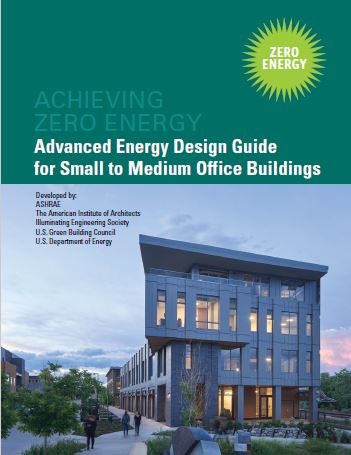
ZE Offices Seminar
View ‘ASHRAE's Latest Guides to Zero Energy Design’ seminar, presented at the 2020 ASHRAE Virtual Conference.
© 2018 ASHRAE. This seminar may not be copied and/or distributed electronically or in paper form without permission of ASHRAE.
VIEW SEMINAR
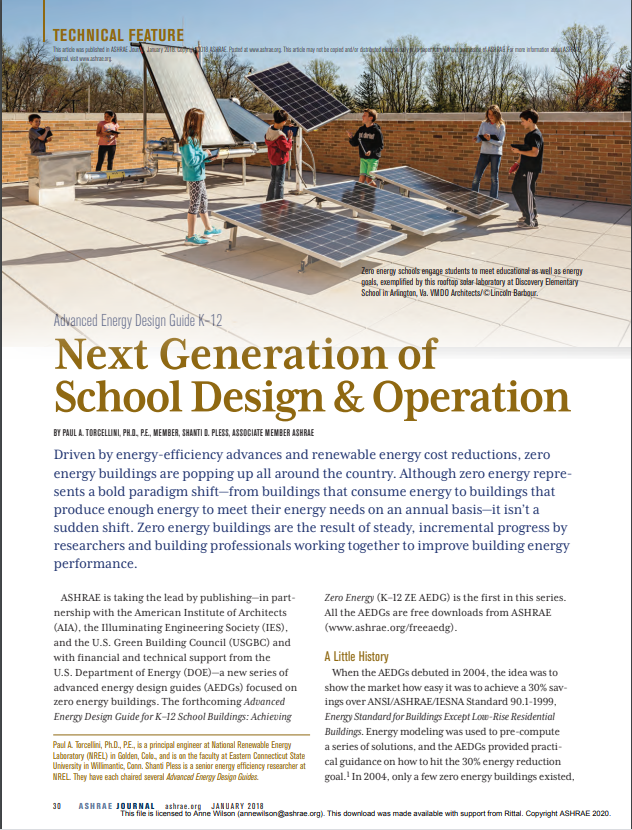
ASHRAE Journal Article
Read the Next Generation of School Design and Operation, featured in the January 2018 ASHRAE Journal.
Read Now
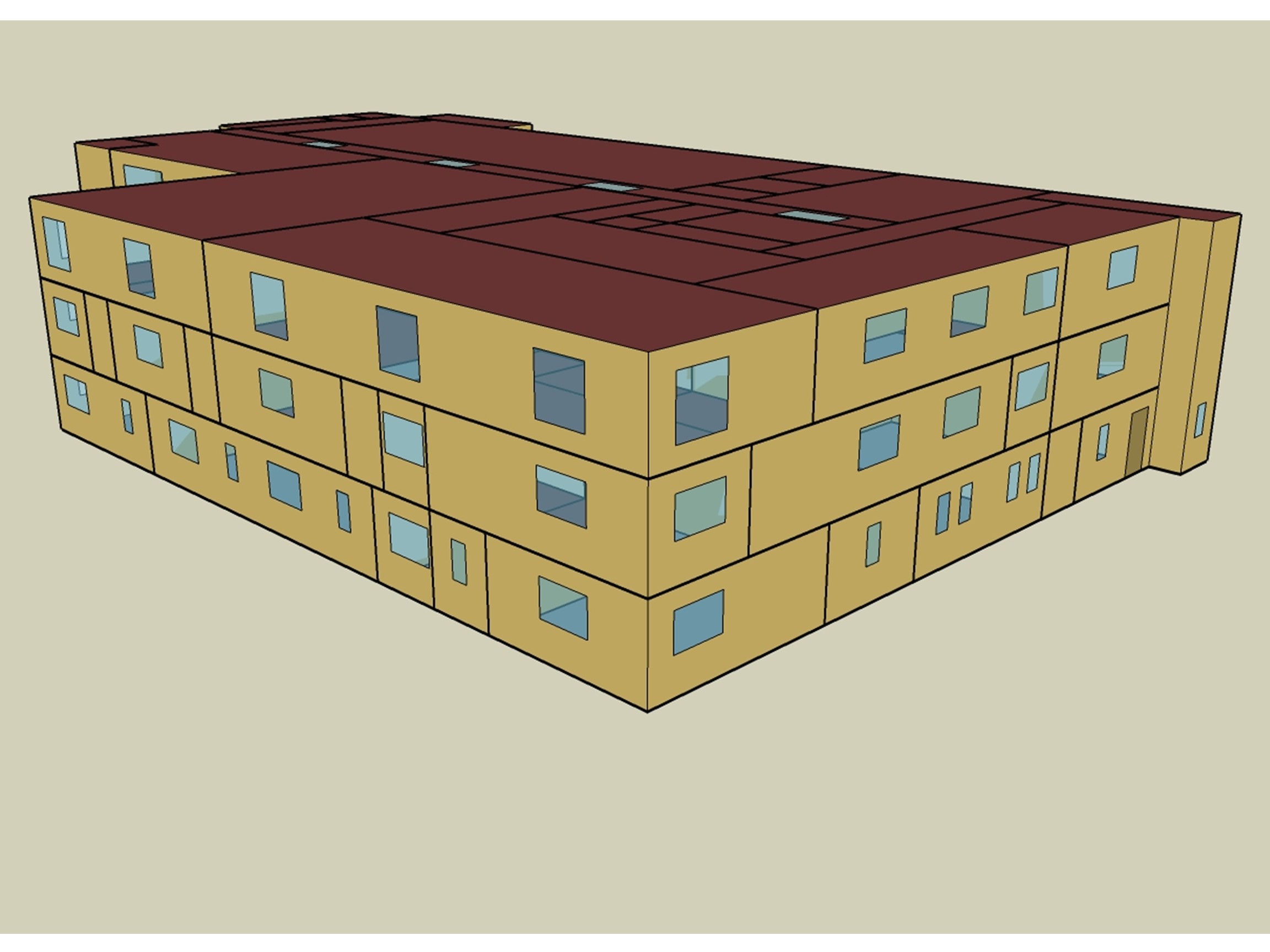
Technical Support Documents - 50%
Completed for each of the 50% Advanced Energy Design Guide building types as exploratory work to determine the types of equipment and design elements that may be needed to reach the 50% energy savings level as compared to Standard 90.1-2004.
Learn More
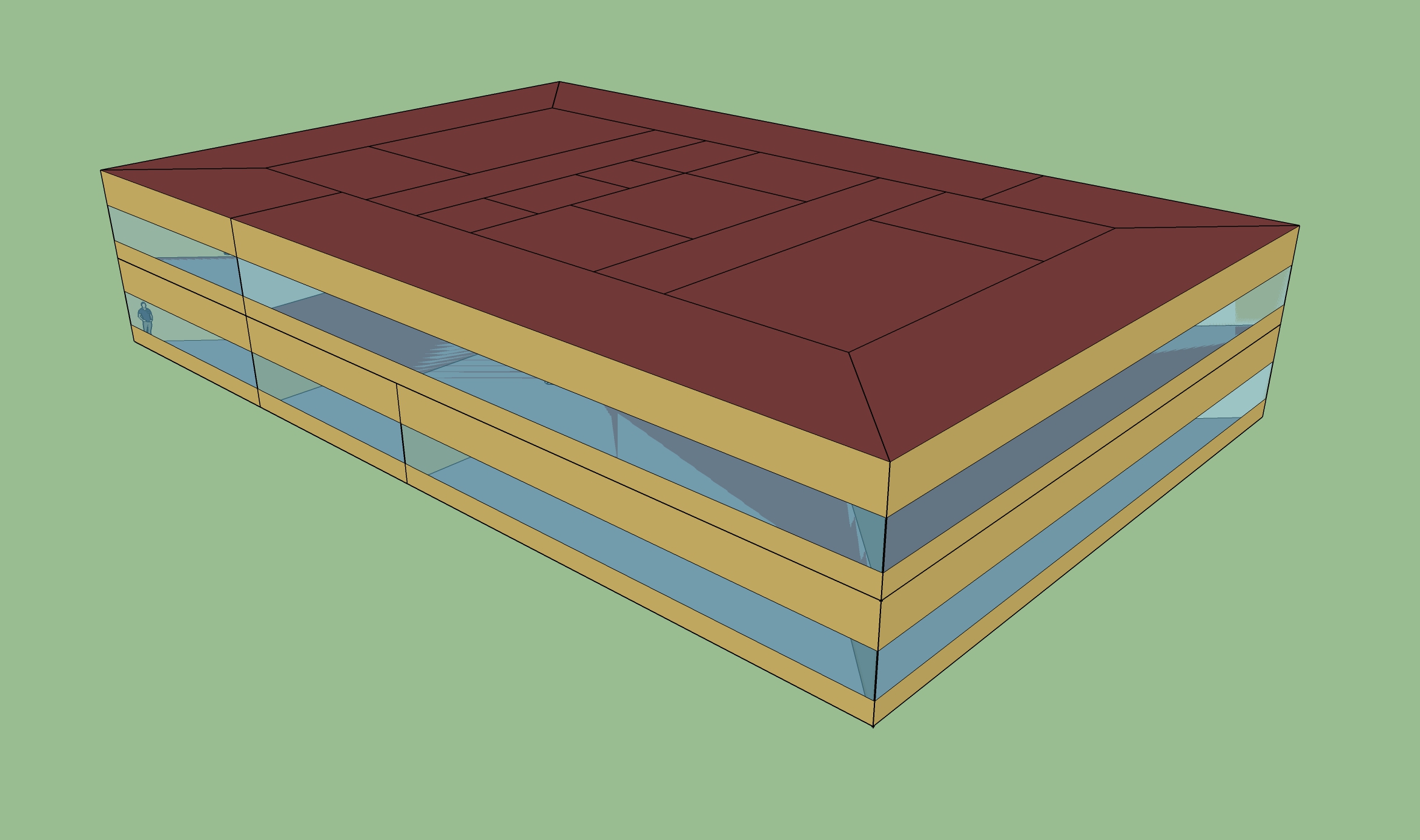
Technical Support Documents - 30%
All of the 30% Advanced Energy Design Guides have a corresponding Technical Support Document prepared by the National Lab that did the analysis for the development of that Guide. These documents contain additional details about the analysis and development process.
Learn More
Additional Tools and Resources
AEDG Toolkit
Useful links and libraries
Related Courses
Advanced Designs for Net Zero Buildings
Background Information
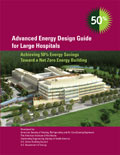
The Advanced Energy Design Guides (AEDGs) are a series of publications designed to provide recommendations for achieving zero energy buildings or building energy savings over the minimum code requirements of ANSI/ASHRAE/IES Standard 90.1. A zero energy building is defined as a building that, on an annual basis, draws from outside resources equal or less energy than it provides using on-site, renewable energy sources. The Guides have been developed in collaboration with these partnering organizations: The American Institute of Architects (AIA), the Illuminating Engineering Society (IES), the U.S. Green Building Council (USGBC), and the U.S. Department of Energy (DOE). The New Building Institute (NBI) participated in the development of the initial Guide.
The partnership agreement between the organizations can be viewed here:
Advanced Energy Design Guides (AIA, ASHRAE, IES, USGBC) (PDF)
The original series of Guides have an energy savings target of 30% over 90.1-1999. Each 30% Guide addresses a specific building type.
The second series of Guides have an energy savings of 50% over 90.1-2004. Each 50% Guide addresses a specific building type.
The third series of Guides provide recommendations for achieving zero energy buildings. Each ZE Guide addresses a specific building type.
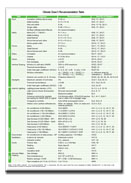
The recommendations in the Guides allow those involved in designing or constructing the various building types to easily achieve advanced levels of energy savings without having to resort to detailed calculations or analyses. Prescriptive energy-saving recommendations are contained in a single table for each of the eight U.S. climate zones for the 30% and 50% Guides. The ZE Guides provide recommendations that are detailed in tables throughout the How-to Strategies.
Help in implementing the recommendations of the Guides can be found in an expanded section of how-to tips in the "How to Implement Recommendations" or “How-to Strategies” chapter of each Guide. The how-to information is cross-referenced with numbered tips and, in the 30% and 50% Guides, color-coded climate zone maps. Examples of advanced building designs and technologies are also provided to illustrate the points made and to demonstrate the flexibility offered in achieving the advanced energy savings provided within the Guides. In some Guides, additional bonus recommendations point out other opportunities to incorporate greater energy savings into the design of the building, and in the ZE Guides, there is an entire section addressing renewable energy.
Feedback on the use of any of the Guides is welcomed and encouraged by ASHRAE. Please let us know your thoughts on the Guide itself and/or what impact the recommendations had on your building. How important was the Guide in your energy savings efforts? What energy savings have you experienced as a result of using the AEDG? ASHRAE is always interested in results that can be used as case studies in future publications. Please contact us in Technical Activities with your feedback or technical questions.
Frequently Asked Questions
A list of frequently asked questions is provided as a service to ASHRAE members, users of the AEDG publications, and the general public. While every effort has been made to ensure their accuracy and reliability, the answers are advisory and provided for informational purposes only. They are not intended and should not be relied on as an official statement of ASHRAE. If you do not find the answer to your question in this list, please use the feedback form above to contact us with your question.
Frequently Asked Questions